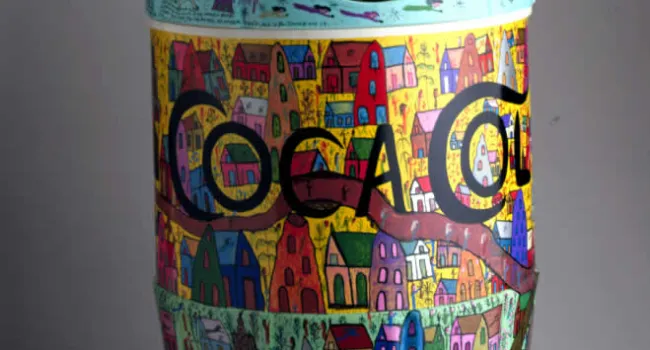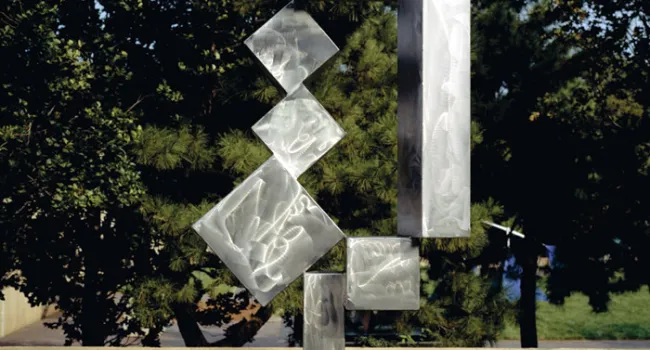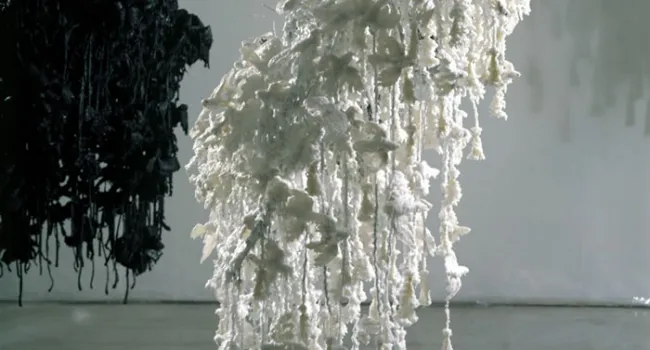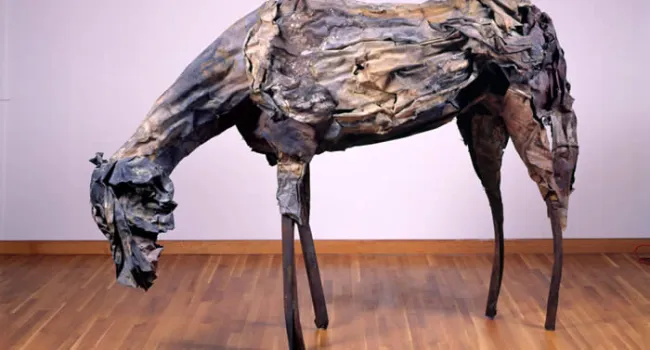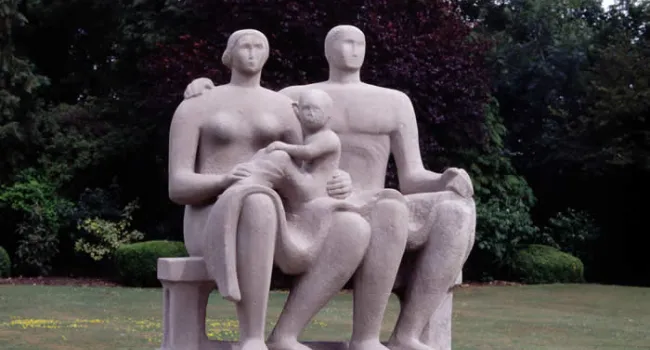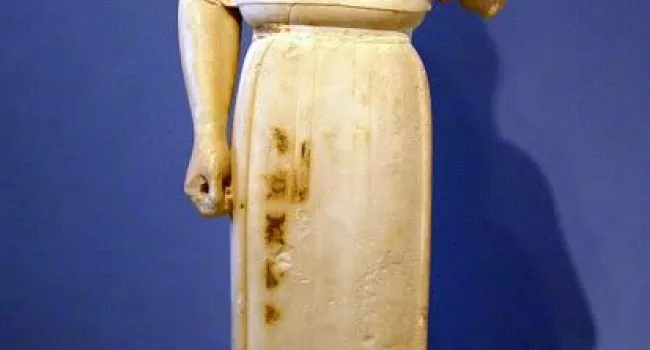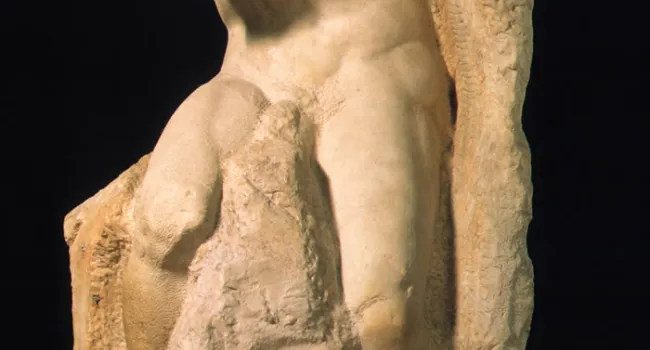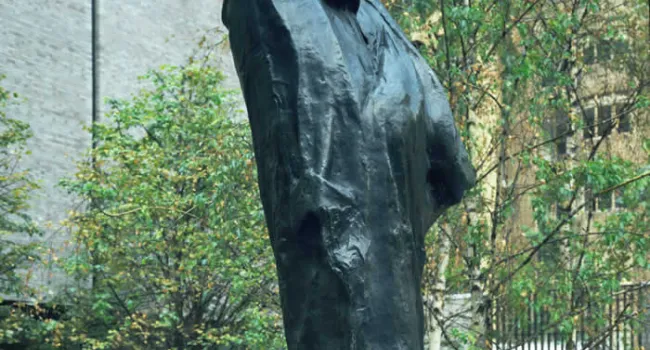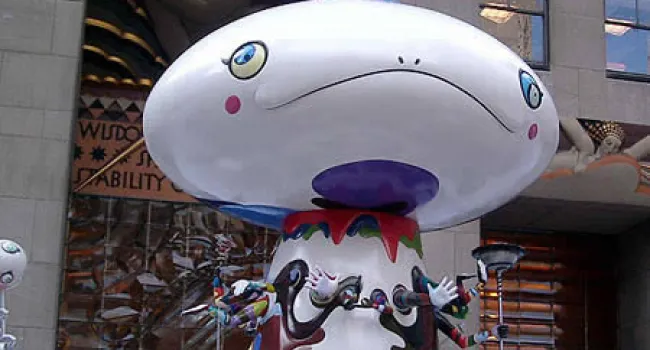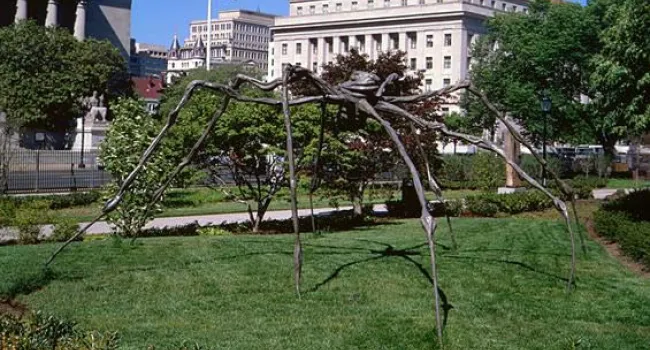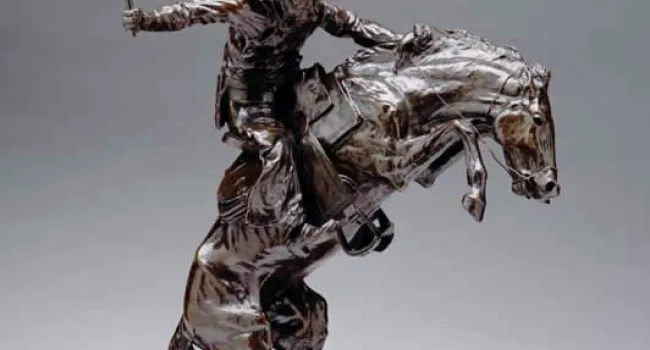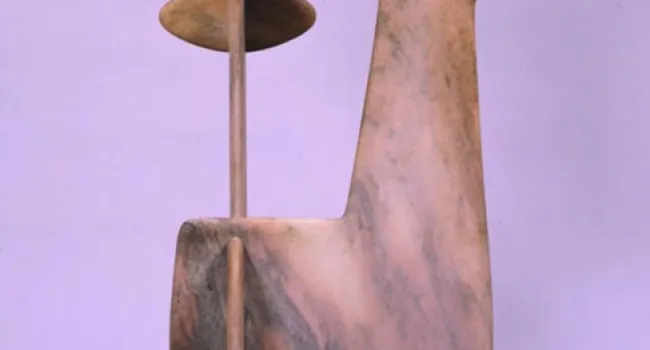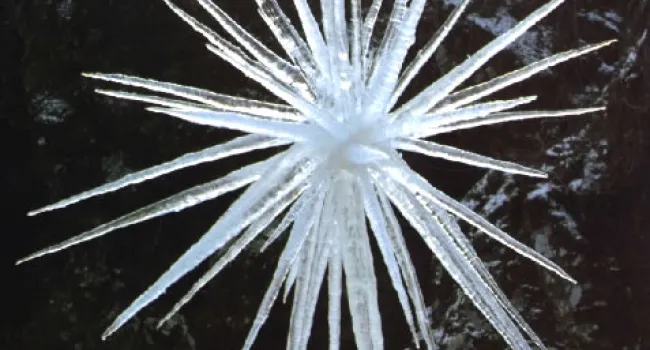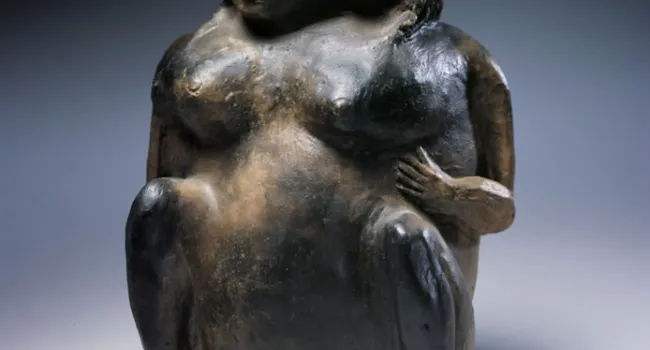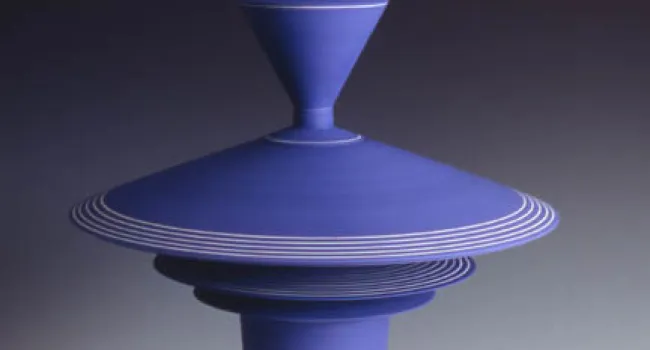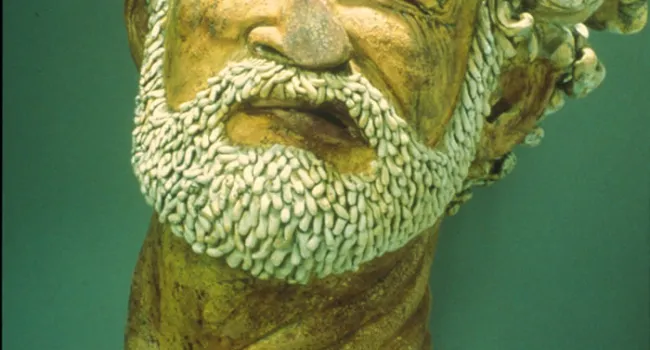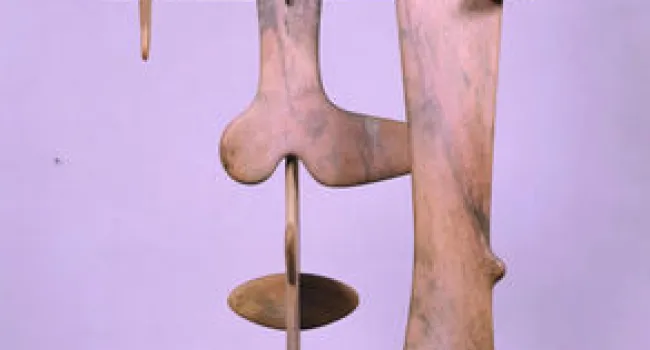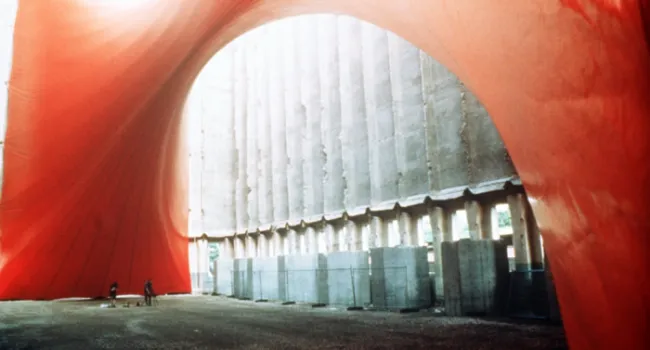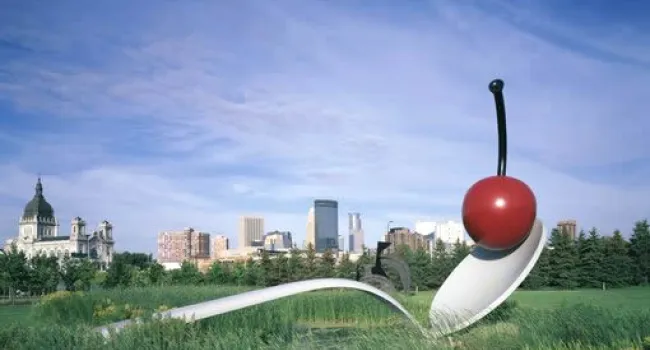
Anonymous
A Closer Look
What elements of design do you think about when you look at Bust of a Warrior? What shapes do you see? Can you see how the artist has turned flat shapes into forms? The two objects on each of the warrior's shoulders started out as rectangles; when the artist folded them around they became cylinders. Draw some shapes on a piece of paper and then draw them as they would look folded. Try making a tube from a rectangular piece of paper or a cone from a triangle.
About the Sculpture
Haniwa means "circle of clay" in Japanese. The earliest ones, made in the 3rd century, were simple shapes but as time passed they became more ornate. This haniwa is from the 6th or 7th century. It represents a soldier who looks strong and dangerous. It is made from earthenware, a kind of pottery that is fired at a low heat, making it fragile. It is amazing that this Bust of Warrior has lasted for 14 centuries without getting broken!
About the Artist
No one knows the name of the artist who made this earthenware clay sculpture. The traces of red paint on it show it was made near Tokyo. It is a haniwa, a kind of artwork made for the dead to carry into the next world. Japanese people during the 5th, 6th and 7th centuries placed haniwa on tombs of their rulers. They built huge hills over their graves. The largest is over 1600 feet long--longer than five football fields--and 90 feet high.
Write About It
- Make a list of what you see.
- How did the artist use the elements and principles of design?
- What do you think the sculpture means? How does it make you feel?
- Select two sculptures to compare & contrast.

